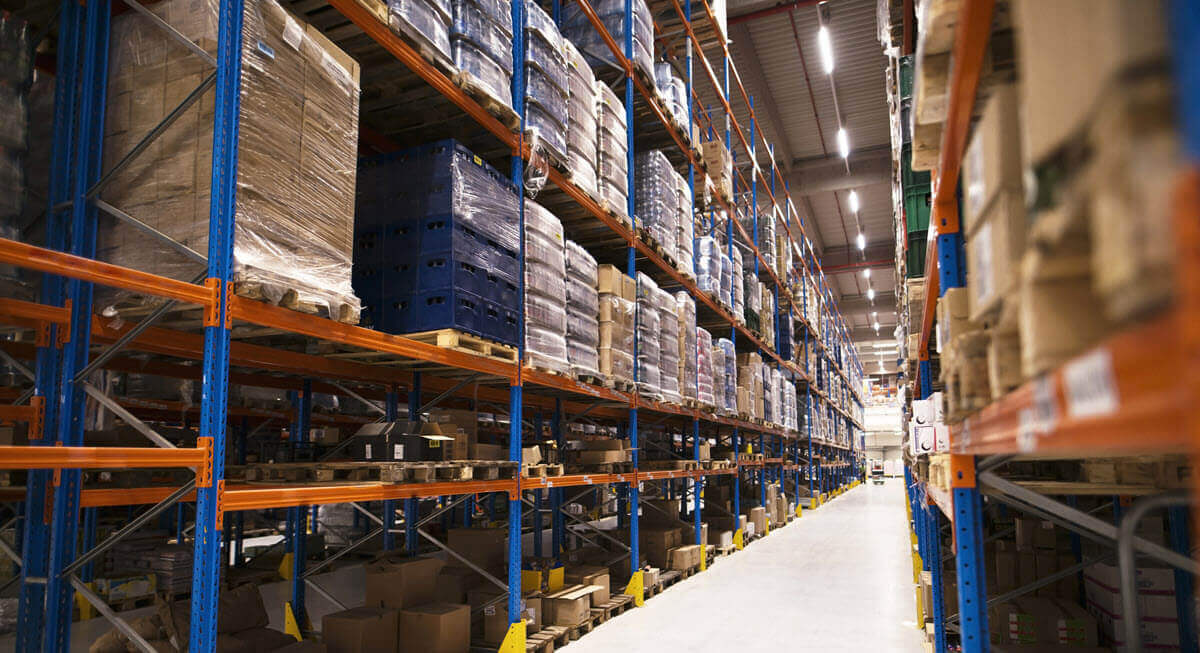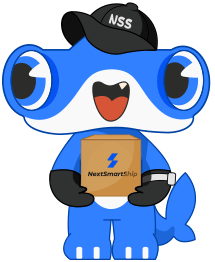2022 was a year that saw many businesses exploring new ways to cope with unprecedented supply chain disruptions.
Research conducted by the Association of Supply Chain Management showed that 66% of businesses faced acute or chronic supply chain disruptions due to the COVID-19 pandemic. From dealing with the Great Resignation, inflation, and finding ways to stock shelves when demand rose and supply fell.
However, looking back on these supply chain disruptions helps businesses become better prepared for the next challenges in 2023. With that in mind, here are 7 key trends in warehousing that retailers can leverage to improve their logistics planning.

Table of Contents
-
- Creation of Sustainable Warehousing
- Adoption of Micro-Fulfillment to Optimize the Last Mile
- The rise of DTC Fulfillment
- Use of Blockchain in Fulfillment
- Growth of Robotic Automation
- Rise of Machine Learning and AI
- Increased Use of Cloud Technologies
- Fully Automated Fulfillment for the Modern Retailer
Creation of Sustainable Warehousing
There’s been a dramatic shift in global attitudes toward sustainability. 71% of consumers across the world are willing to pay a premium for sustainable products. In 2023, companies should get ready for sustainability to become the expectation and not just a buzzword.
How does sustainability apply in warehousing?
Freight transport accounts for 8% of global carbon dioxide emissions and it’s predicted to increase to 42% by 2050. To reduce this impact, sustainable practices have to start from the warehouse. These include:
- Creating cool roofs with materials that reflect sunlight
- Using LED lights
- Using green building materials
- Using eco-friendly packaging options
- Installing solar panels
- Switching to electrified vehicles
Adoption of Micro-Fulfillment to Optimize the Last Mile
The last mile is the final step of delivery from a warehouse facility to the customer. Being able to get products faster to customers in a cost-effective way is crucial to e-commerce retailers.
Customers are willing to pay more for better last-mile delivery including same-day delivery. However, the last mile comes with its own set of challenges such as increased cross-country costs.
To mitigate this challenge, brands opt for micro-fulfillment. This involves handling fulfillment from a local warehouse and offering the buy online, pick up in-store option.
It’s worth noting that manually-operated micro-fulfillment centers have higher operating costs. On the other hand, automated micro-fulfillment centers have reduced the need for labor and feature faster picking speeds to ensure speed of delivery.
The only caveat to micro-fulfillment is storage capacity as these centers may not be able to handle bigger fulfillment needs. In addition, some spaces may not be zoned appropriately or the local government may oppose a warehouse opening in a residential area.
Instead of installing micro-fulfillment centers inside your stores or dealing with a manual micro-fulfillment center, NextSmartShip boasts fully automated fulfillment centers in the U.S., Canada, Europe, and Australia.
The rise of DTC Fulfillment
Direct-to-customer (DTC) is a business model where products are sold directly to the end user without relying on a middleman like a wholesaler or third-party retailer.
Advancements in e-commerce and the popularity of social media have contributed to the steady rise of DTC brands. This has also led to the growth of DTC fulfillment services.
DTC fulfillment strategies require a more specialized approach because fulfillment has to be integrated with other systems. You’ll need marketplaces to download orders, shipping companies to handle packing, warehouse robotics to facilitate picking, and a customer relationship management system to handle questions as well as returns.
The rise of DTC fulfillment has led to the integration of flexible contracts. These contracts allow retailers to split orders up into smaller blocks. Companies are able to change orders as demand shifts.
Use of Blockchain in Fulfillment
Blockchain is a public ledger system that ensures records are linked in a way that it’s impossible to alter or hack.
Blockchain in fulfillment enables companies to source materials from anywhere in the world and sell their products locally and internationally while maintaining a secure line throughout the entire process.
Blockchain is valuable in fulfillment in the following ways:
- It increases transparency along the supply chain because it allows brands to document their inventory along various touchpoints.
- It allows unlimited partners to securely check out your blockchain to get partners and relevant stakeholders up to speed.
- It acts as a universal ledger and saves time spent on auditing.
Small and medium-sized businesses can adopt blockchain by integrating it into payment processing and contracts.
Growth of Robotic Automation
Robotic automation helps to reduce manual workflow and speed up repetitive tasks such as picking and palletizing products.
Some warehouse robots are fully autonomous and use laser sensors as well as LiDAR to navigate around. Others have restricted routes that use magnetic tape or rails.
The growth of online shopping and demand for faster shipping has led to the rise of warehouse robotic automation. Let’s dive into the different types of robots you can expect in a smart warehouse.
- Automated Guided Vehicles (AGV)
AGVs navigate the warehouse by following a predetermined path using embedded markers or an advanced LiDAR. They’re used to replace manually operated forklifts or pick carts.
- Autonomous Mobile Robots (AMR)
Unlike an AGV, an AMR only uses sensors like LiDAR or onboard cameras to move around the warehouse. AMRs usually generate their own routes even around obstacles.
- Aerial drones
Drones are able to get into small spaces where workers cannot. This makes them ideal for inventory scanning.
- Unmanned Aerial Vehicles (UAV)
UAVs work the same as aerial drones but they’re controlled by human operators.
- Automated Storage and Retrieval Systems (ASRS)
ASRS use cranes to move through the aisles and retrieve products.
- Collaborative Robots (Cobots)
Cobots are programmed to follow workers as they pick different orders.
- Goods-to-Person (G2P)
G2P vehicles reduce the need to have workers pull products from the shelves and only station pickers to receive items.
- Articulated Robotic Arms
These robots are attached to a wheeled base to facilitate movement. They can be used for picking, packing, unloading, pallet construction as well as assembling components.
NextSmartShip leverages AGV robots to automate its fulfillment and increases its productivity by 300%. This boosts fulfillment speed and helps our customers offer same-day as well as express delivery.
Rise of Machine Learning and AI
A smart warehouse features different interconnected technologies that create an ecosystem governed by AI. AI adds value to the warehouse through its subsystems such as machine learning, computer vision, robotics, and natural processing language.
Natural processing language helps to facilitate voice picking and some AI features wearable technology that could range from smart glasses equipped with cameras to automatically identify barcodes using computer vision.
Machine learning uses algorithms from sensors to identify patterns and suggest actions ranging from routes to replenishment, and inventory assessment.
Machine learning is usually associated with the internet of things (IoT). this is because it requires a tremendous amount of fine-grained data and computing power.
Some of the ways machine learning can be adopted in the warehouse include:
- Facilitating proper slotting to improve productivity
- Enables communication that incorporates system monitoring and enables an analysis of data streams
- Using Radio Frequency Identification (RFID) to replace barcode scanners and paper trails to improve inventory monitoring
- Enable better analytics and supply chain forecasting enriched with visual pattern recognition and real-time data
Increased Use of Cloud Technologies
The digitization of warehousing needs the incorporation of AI as well as cloud-based warehouse management. 2023 will experience increased usage of cloud technology due to the following reasons:
- Cloud WMS allows scalability because it can be operated from anywhere and requires no special hardware updates
- It allows multi-warehouse management as it can handle checking stock availability, inventory optimization, and ensuring on-time delivery
- Cloud computing improves cybersecurity and allows for real-time monitoring of data
NextSmartShip utilizes cloud technologies to help you manage everything in one place. You’ll not only be able to monitor your inventory levels, track real-time fulfillment, send shipping updates to your customers, and auto-sync orders from multiple platforms.
Fully Automated Fulfillment for the Modern Retailer
Keeping up with the latest trends in warehousing and making sure that your supply chain is cost-effective doesn’t have to be overwhelming. NextSmartShip provides a full-service fulfillment solution for DTC, B2C, and B2B brands.
Our goal is to make eCommerce fulfillment as stress-free as possible. So, if you’re looking to outsource your supply chain, consider partnering with NextSmartShip today and find out how to optimize for time and cost.


